For Product Registration and general enquires please contact us
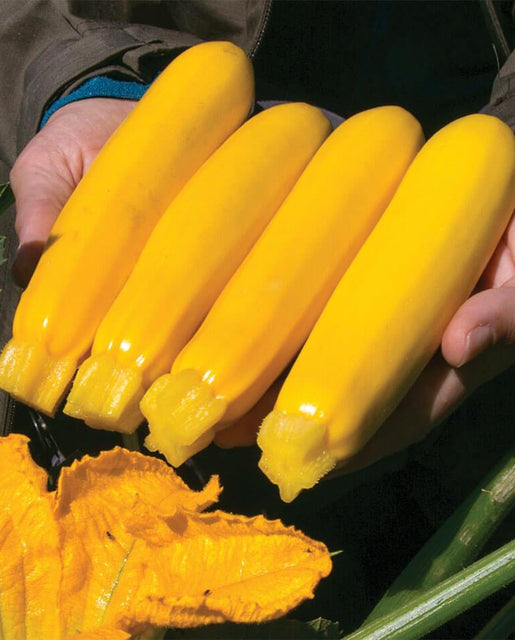
Yellowfin Organic
$11.99 – $1,479.99
Golden fruits with smooth skins, rich flavour, and a buttery interior texture. The fruits are uniformly and evenly thick along their length, produced on open, bushy plants. The plants themselves boast a high resistance to powdery mildew and Cucumber Mosaic Virus.
West Coast Seeds ships anywhere in North America. However, we are not able to ship garlic, potatoes, asparagus crowns, bulbs, onion sets, Mason bee cocoons, or nematodes outside of Canada. We regret, we cannot accept returns or damages for orders outside of Canada. The minimum shipping charge to the US is $9.99.
Description
More details about Yellowfin Organic
CERTIFIED ORGANIC! Golden fruits with smooth skins, rich flavour, and a buttery interior texture. The fruits are uniformly and evenly thick along their length, produced on open, bushy plants. The plants themselves boast a high resistance to powdery mildew and Cucumber Mosaic Virus. The plants and their copious fruits are nearly spineless. Plant Yellowfin Organic zucchini seeds in rich, well-drained soil in full sun. Dig finished compost or well-rotted manure into the beds, and dig in 1 cup of complete organic fertilizer beneath each transplant. Water the soil around them when you irrigate, and always avoid overhead watering, as wet leaves will attract foliar diseases. The leaves of Yellowfin may also turn yellow. This is the same genetic expression that makes the fruits yellow. It should not be a cause for concern. Matures in 50 days. (Hybrid seeds)-
- Certified organic seeds
- Appealing colour and texture
- Smooth, spineless fruits
- Matures in 50 days
- Hybrid seeds
All About Yellowfin Organic
How to Grow Zucchini

Step 1: Timing
Direct sow or transplant in late May or early June when soil is warm. For transplants, start seeds indoors in late April or early May. Optimal soil temperature for germination: 25-35°C (68-95°F). Seeds should sprout in 7-14 days.
Step 2: Starting
Sow seeds 2cm (1″) deep. Sow 3 seeds in each spot you want a plant to grow and thin to the strongest one. Aim to space zucchinis no less than 45-60cm (18-24″) apart in rows 90-120cm (36-48″) apart.
Step 3: Growing
Ideal pH: 6.0-6.8. These big, fast-growing plants need plenty of moisture and lots of food. Grow them in rich, well-drained soil in full sun. Dig finished compost or well-rotted manure into the beds, and dig in 1 cup of complete organic fertilizer beneath each transplant. Water the soil around them when you irrigate, and always avoid overhead watering, as wet leaves will attract diseases like mildew. Keep weeded. Misshapen or withered fruits can result from incomplete pollination. Make sure to remove these from the plants as you see them, before they begin to rot, and put them in the compost. In the home garden it can be tempting to over-plant zucchinis. One well-grown plant will provide enough fruits for the average family. Instead of planting several zucchinis, use that space for other vegetables.
Step 4: Germination
In optimal conditions at least 80% of seeds will germinate. Usual seed life: 2 years. Per 100′ row: 180 seeds, per acre: 15M seeds.
Step 5: Harvest
Pick regularly to encourage the plant to keep on fruiting. Zucchini leaves are often very prickly, so pull delicate skinned fruit out carefully. Fully mature zucchini have a hard skin.
Tips!
Disease & Pests: Zucchinis that are grown in good soil in full sun will have few problems. One common complaint is the development of powdery mildew on the leaves. This begins to show up in mid-summer as grey patches on the leaves and stems, and it literally is mildew. It results from excess moisture, and can be prevented or minimized by avoiding overhead watering at all times. Try to water plants early in the day, and only water the soil around them. Avoid over-crowding plants to improve air circulation around them. Leaves that are badly affected by mildew can be removed, but throw them in the garbage, not the compost.Additional information
| Matures | in 50 days |
|---|---|
| Season | Warm season |
| Exposure | Full-sun |
| Quantity | 10, 50, 250, 1000, 5000 |
You must be logged in to post a review.




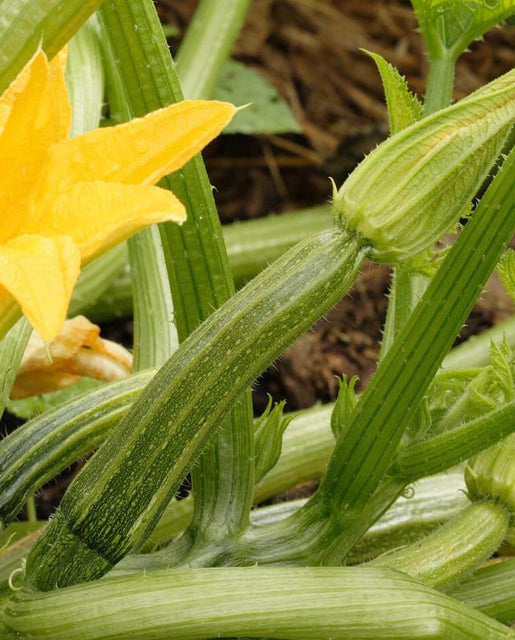
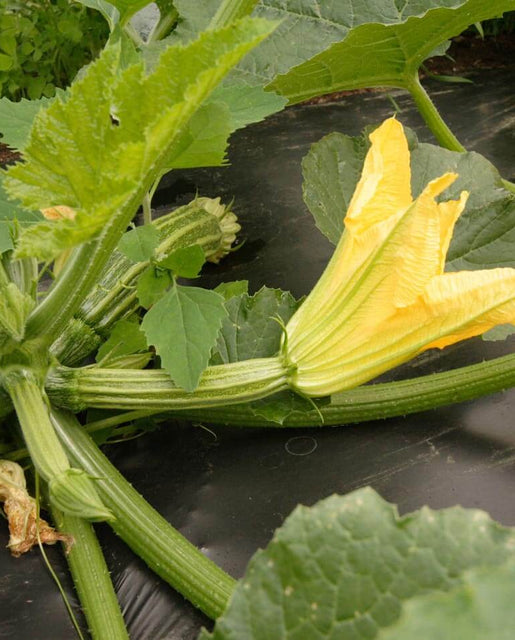
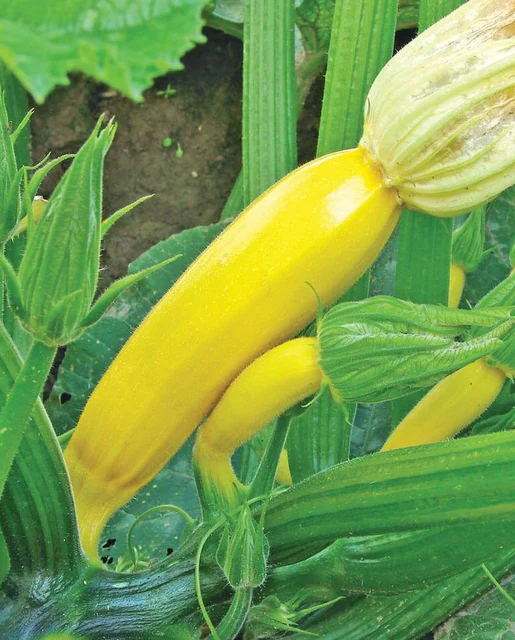
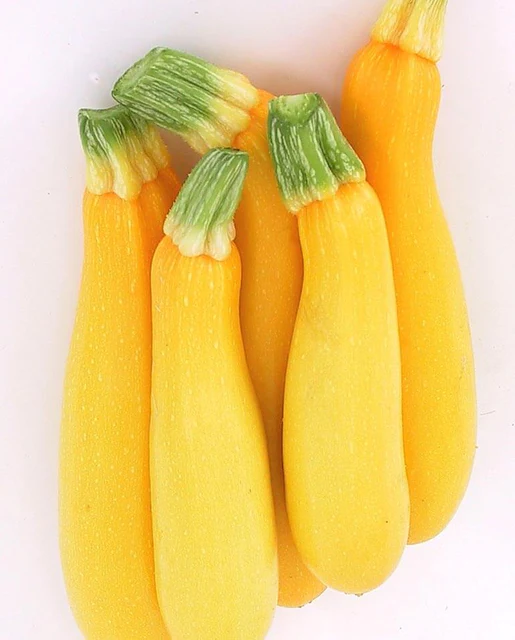
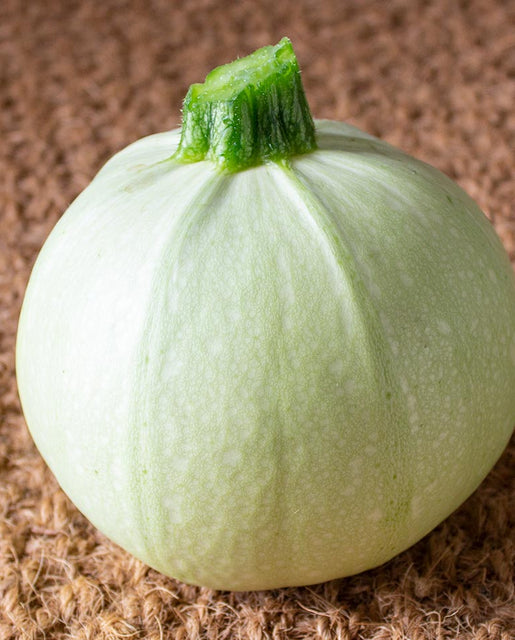
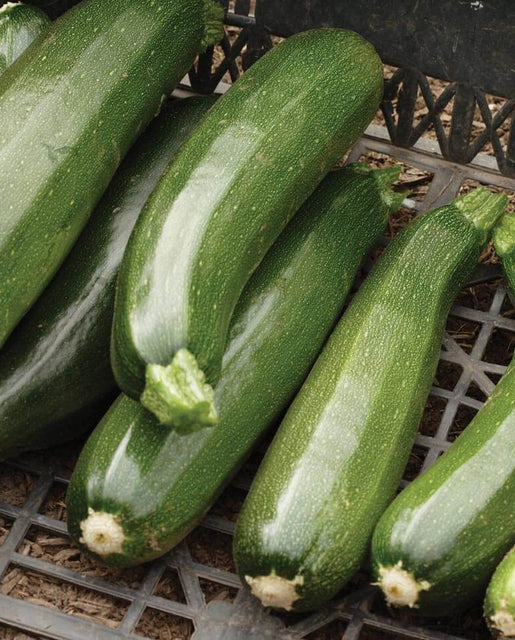
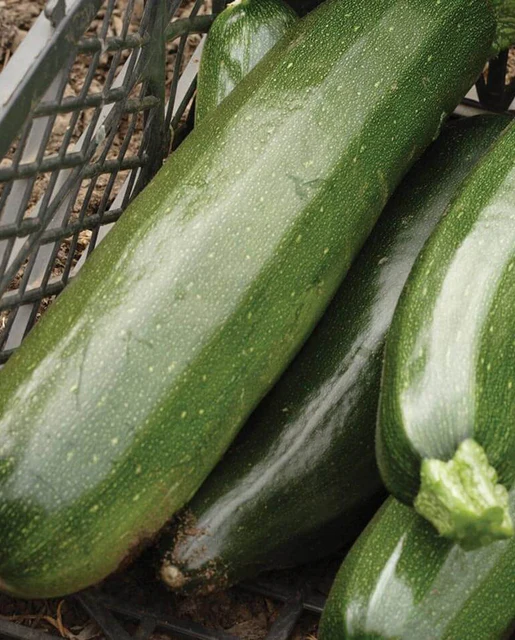




Reviews
There are no reviews yet.